Air Operations, Europe
RAF BOMBER COMMAND
Daylight Ops:
- 213 Lancasters and 10 Mosquitos of Nos. 1, 3 and 8 Groups attack a flying bomb storage dump at Nucort, but the target is covered in cloud and the bombing is scattered.
- 6 Mosquitos carry out Ranger patrols without a loss. 1 Ju-88 is claimed to be destroyed near Oldenburg.
Evening Ops:
- 35 Mosquitos are sent to Berlin, 8 Halifaxes and 6 Lancasters lay mines in the Kattegat and in the Frisians, 13 Halifaxes and 9 Stirlings are on Resistance operations, and there are 4 OTU sorties.
- 1 Mosquito is lost on the Berlin raid.
US 9th AIR FORCE
FRANCE:
- On a day with most missions canceled because of bad weather, 9th Air Force fighters and fighter-bombers attack targets of opportunity and lines of communication in the battle area.
US 12th AIR FORCE
ITALY:
- 12th Air Force B-25s and B-26s attack bridges, viaducts, and marshalling yards in north-central Italy.
- XII TAC fighter-bombers attack gun emplacements, rail lines, roads, and the Modena Airdrome.
[  | |   ] ]
CBI
BURMA
On the Salween front, the 307th Regiment of the 103rd Division, Chinese 8th Army, is continuing costly efforts to dislodge the Japanese from Sung Shan.
INDIA
On the Assam front, the British XXXIII Corps has succeeded in driving the Japanese out of the immediate vicinity of the road junction at Ukhrul
[  ] ]
Eastern Front Model, commanding Army Group Center, asks for Army Group North to be moved south behind the Dvina to bolster his front and to prevent them being cut off by the Russian drive to the Baltic. As usual, Hitler refuses to allow this sensible step. In a great Russian offensive into the Baltic States, the 2nd Belorussian Front attacks northwest of Vitebsk.
A week later the 3rd Belorussian Front will attack near Pskov and the Leningrad Front will attack at Narva 9 days after that. Army Group Center has lost almost the whole of the 9th and 4th Armies. The 3rd Belorussian Front, under Gen Ivan Chernyakhovsky, surrounds Vilna in Lithuania. In the middle of Model's sector Slonim is taken.
FINNISH SECTOR
Soviet forces reach the Suvilahti and Lormada Rivers, taking Pitkjuaranta.
LATVIA
The German 16th Army is assaulted by the 3rd Shock and 10th Guards Armies, while to the south the 2nd Guards and 4th Shock Armies advance to link up with the 6th Guards Army at Daugavpils. Hitler forbids any retreat of Army Group North to the Dvina.
NORTHERN SECTOR
The 2nd Baltic Front attacks the southern wing of the 16th Army with its 10th Guards and 3rd Shock Armies. The 2nd Guards and 4th Shock Armies launch new attacks aimed at meeting up with the 6th Guards Army at Daugavpils. With Army Group North now also threatened, Field Marshal Model requests that Friessner be allowed to withdraw behind the line of the Dvina, shortening his line and creating a reserve that can be committed to reinforce the shattered armies of Army Group Center. Hitler categorically refuses.
CENTRAL SECTOR
Utena falls to the 43rd Army and Slonim to the 65th Army of the 1st Belorussian Front.
[  | |   ] ]
Italy In the Tyrrhenian sector the divisions of the American IV Corps make negligible progress northwards toward Leghorn.
[  | |   ] ]
New Guinea On Biak, Companies K and L of the 163rd Infantry push into the Ibdi Pocket.
In the Aitape area, TF PERSECUTION begins a reconnaissance in force east of the Driniumor. The 1st Battalion, 128th Infantry, crosses at the mouth of the river and drives along the coast almost to Yakamul, dispersing 2 enemy groups en route. The 2nd Squadron, 112th Cavalry, crosses to the south and moves cautiously through the jungle for about a mile, making no contact with the enemy. The rest of TF PERSECUTION force in the Driniumor area pause to regroup. During the night of the 10th, the Japanese launch an attack westward in force across the Driniumor breaking through the line of the PERSECUTION Covering Force on a 1,300-yard front and threatening the Paup villages along the coast. Company E, 128th Infantry, is overwhelmed and suffers heavy casualties. Company G is also heavily hit, but checks the Japanese onslaughts. Reconnaissance forces east of the river are ordered to withdraw to the river line.
Lt-Gen Krueger designates the 6th Infantry Division as the Sansapor Task Force. Maj-Gen Franklin C. Sibert will command 20,500 men in this operation. The 20th RCT of the 6th Infantry Division will serve as the task force reserve at Wakde. D-day is set for 30 July. Task Force 77, under Rear-Adm William M. Fechteler, will consist of 24 LSTs, 15 LCIs, 5 APDs and 19 destroyers. Task Force 78, under Rear-Adm Robert S. Berkey, will consist of 1 heavy cruiser, 2 light cruisers, and 9 destroyers.
[  | |   ] ]
Pacific The US submarine Tinosa (SS-283) sinks the Japanese merchant fishing boat No.5 Shosei Maru 30 miles west of Danjo Island.
[  | |   ] ]
United States, Policy After visiting China, Vice President Henry Wallace writes scathing report very critical of Chiang Kai-shek. Among other things, he proposes Roosevelt assign someone to mediate differences between the Chinese Nationalists and Communists.
[  | |   ] ]
Western Front Gen Montgomery, Commander-in-Chief of the 21st Army Group, issues directives for Operation COBRA, the American 1st Army's offensive to penetrate the defenses of the Germans west of St ô and take Coutances.
In the VIII Corps sector the American troops advanced south of La Haye-du-Puits. The 3 divisions of the VII Corps, the 4th, 9th and 83rd, continue their offensive from the west.[WF]
The British VIII Corps opens an offensive southwest of Caen in the area between the Odon and Orne Rivers. The 43rd Div captures Eterville and Height 112 on the road to Evrecy. In the Caen sector the Canadian II Corps under Gen Simonds, grouped with British II Army, goes into action.[CAEN]
[  | |   ] ]
Images from July 10, 1944
Sherman Tanks of the Sherbrooke Fusiliers
|
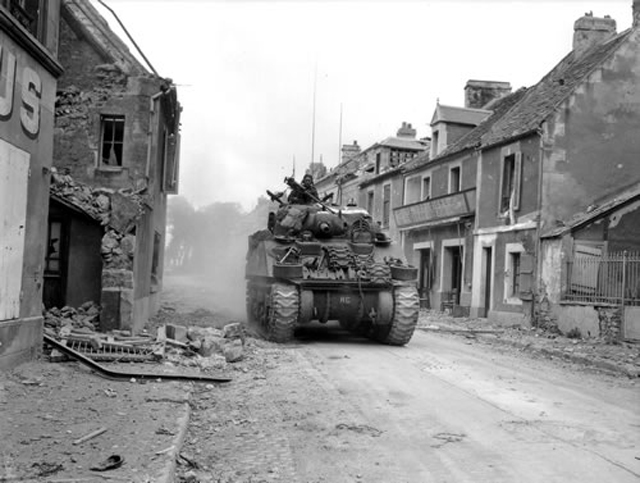 |
|
A Sherman Tank Crew from 27th Armored Brigade
|
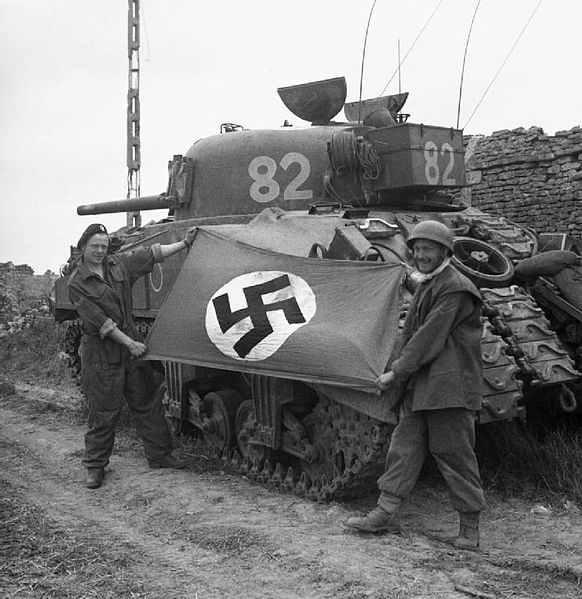 |
|
Highland Light Infantry of Canada
|
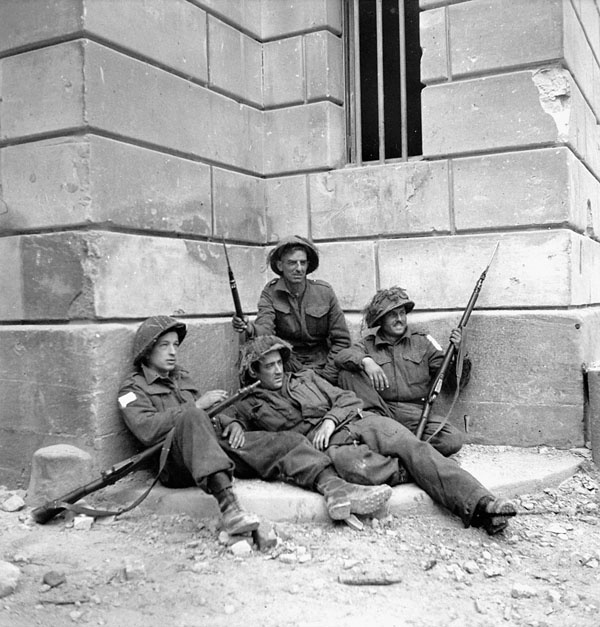 |
|
British Sherman Tanks and a 6pdr Anti-tank Gun
|
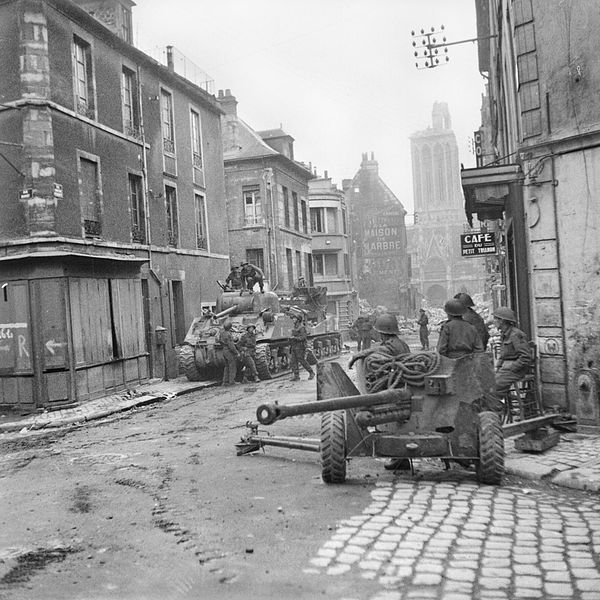 |
|
A British Soldier Carries a Little Girl
|
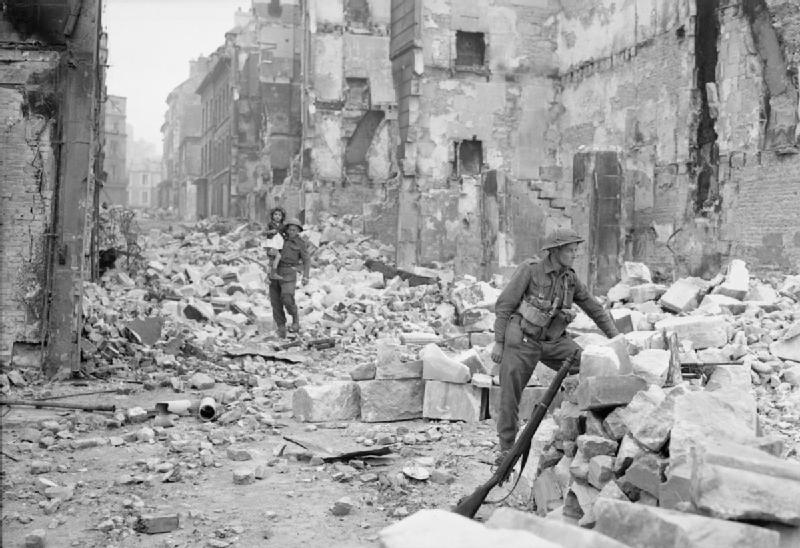 |
|
Looking Out for Snipers
|
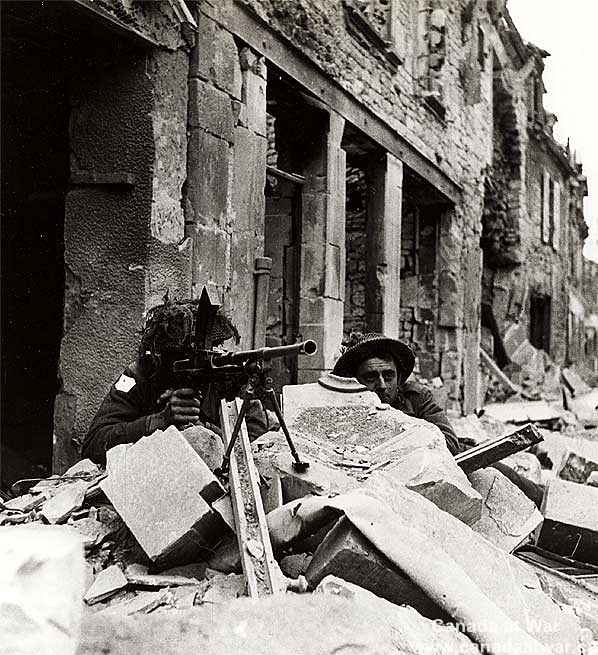 |
|
Canadian Troops of the 3rd Infantry Division
|
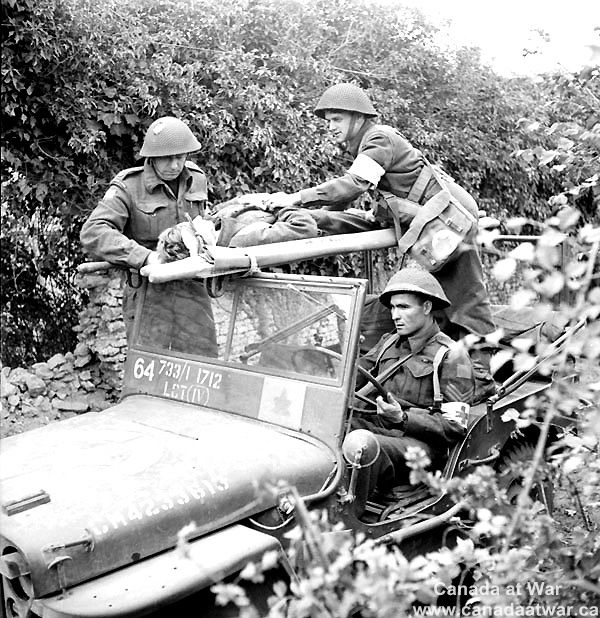 |
|
A Cheerful Group of Soldiers
|
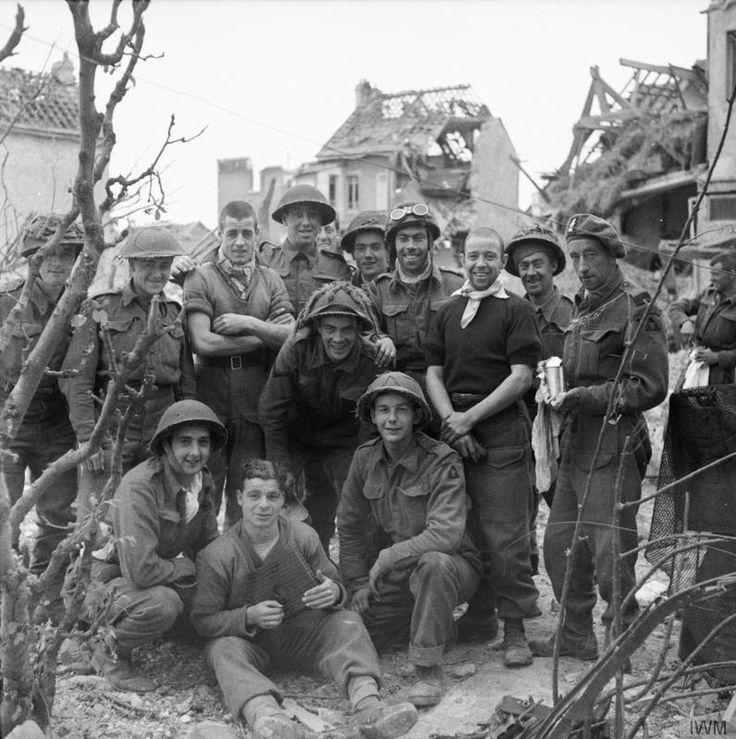 |
|
Moving through the Ruins of Caen
|
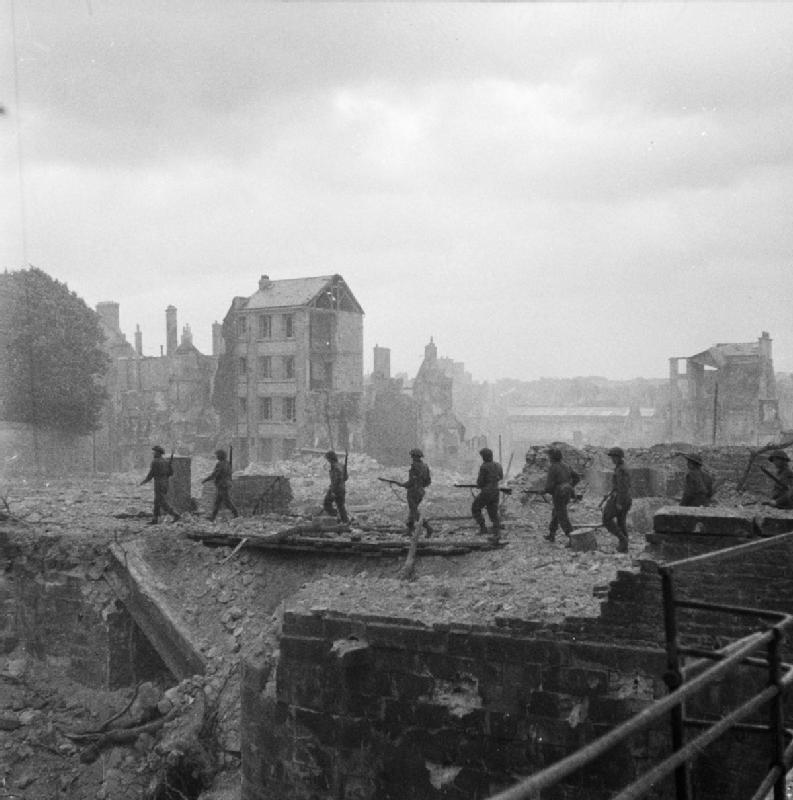 |
|
Infantrymen of the 43rd (Wessex) Division
|
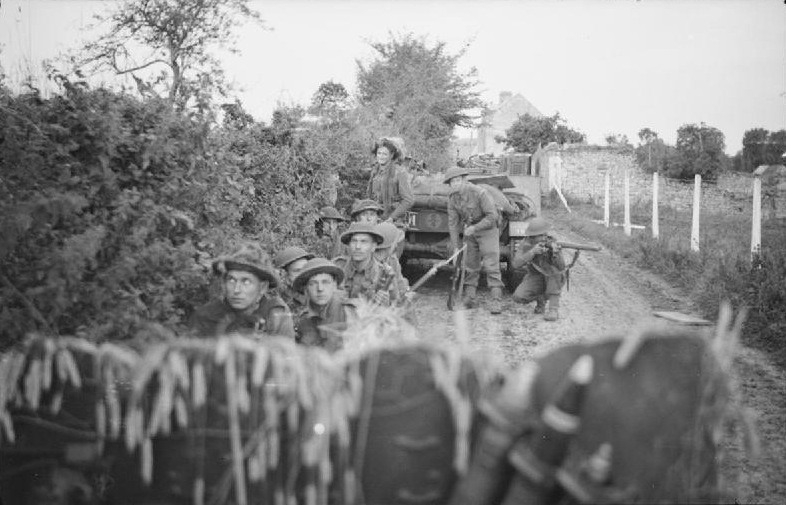 |
|
Celebrating the Liberation of Caen
|
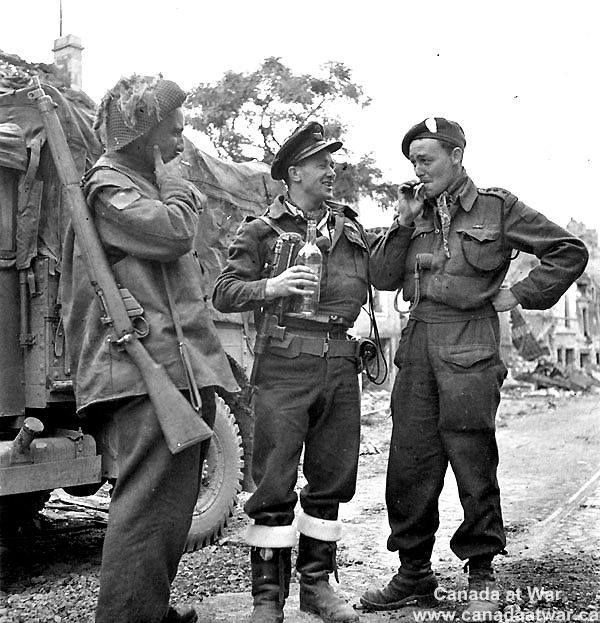 |
|
Unidentified Sappers Examining Unexploded Shell
|
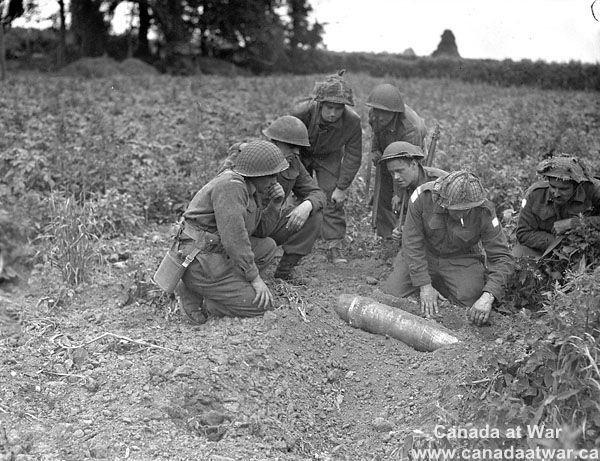 |
|
Firing into a Battered House
|
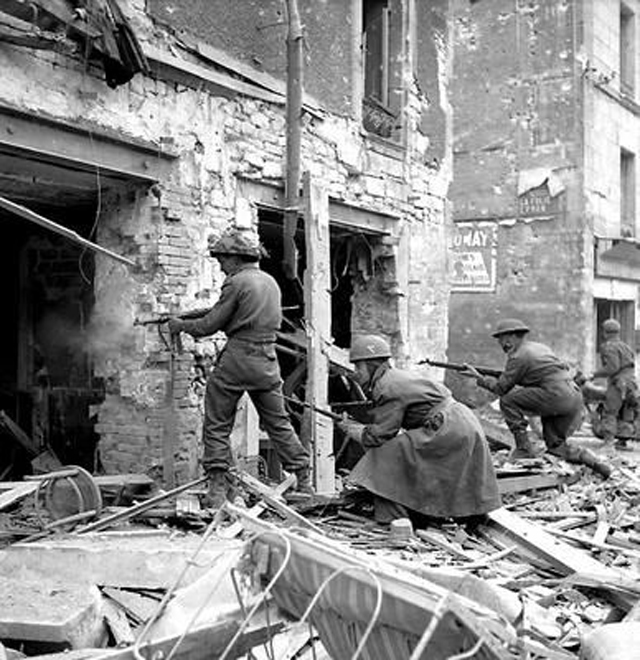 |
|
Troops of 1 Kings Own Scottish Borderers
|
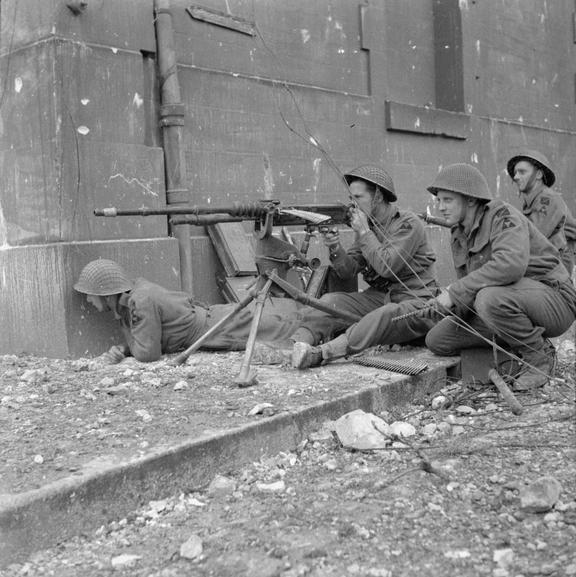 |
|
British Army Infantryman in Caen
|
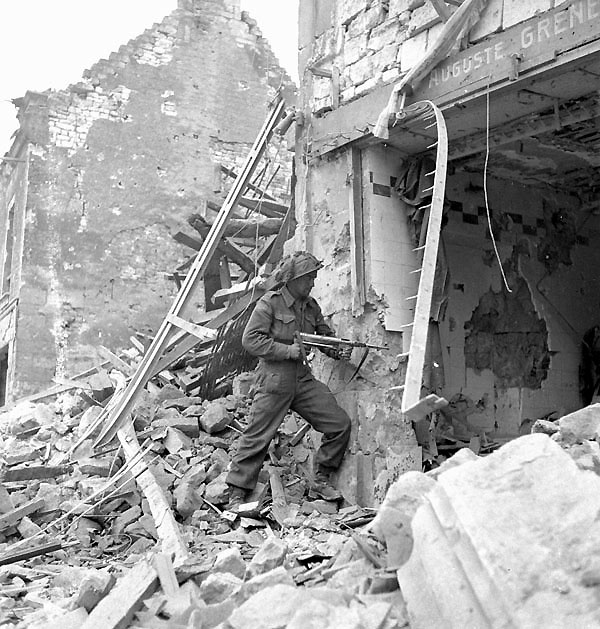 |
|
Canadian Infantrymen of the Regina Rifle Regiment
|
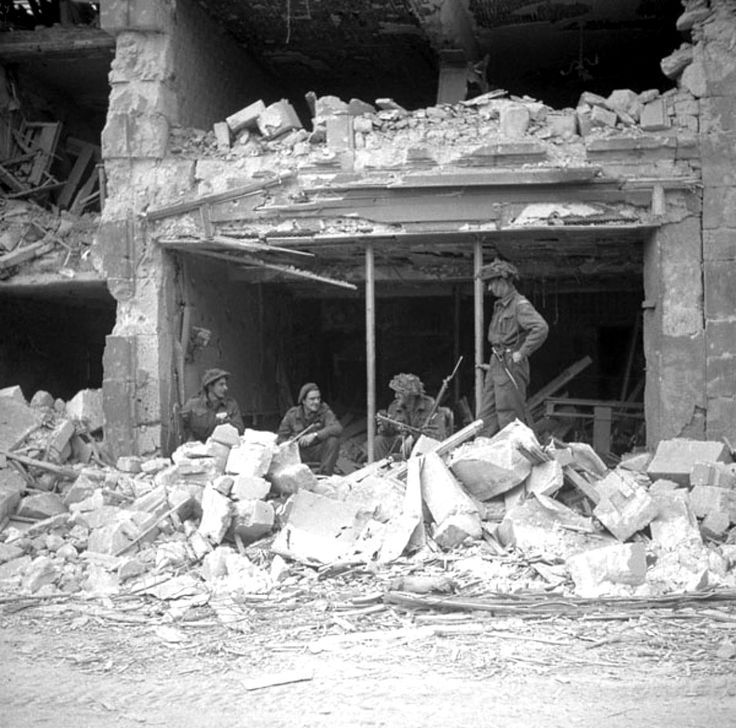 |
|
|















